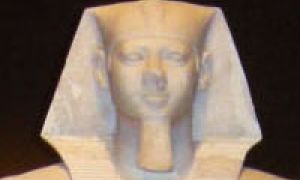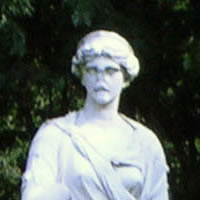Inspection of Sculptures, Paintings and Antique Artifacts
Baker Testing Services works with art museum curators, art dealers, conservators, and collectors to analyze objects such as sculptures and paintings. Using non-destructive testing (NDT) methods, important information and details undetectable to the naked eye have been revealed.



( Photographs are courtesy Boston Museum of Fine Arts )
Revealing Art History
and Condition
With enhanced non-destructive testing methods, it is possible to:
- Examine the interior structure of a sculpture or object. Statues from antiquity have been tested to discover construction and connection methods that are crucial to restore or move priceless artifacts.
- Identify unseen surface flaws and determine the extent of cracks to assist conservators and restoration experts to identify areas that require repair or special handling
- Look beneath layers of paint for an original signature or identify the existence of a hidden, second painting on the same canvas
- “Reverse Engineer” antiques and artifacts reproduction
Baker Testing Services has tested cannons, bells, antique guns, paintings, and dozens of other artifacts including Statues from Egyptian, Roman, and Far-Eastern Antiquity.
NDT Methods
Working at the museum or in our laboratory, Baker Testing consults with each client to identify the scope of the project and advise on the non-destructive test (NDT) method to provide the best possible results.
Common NDT methods for museum pieces and antiques artifacts include X-ray, Liquid Penetrant, Magnetic Particle and Ground Penetrating Radar.
X-Ray Inspection
Digital and film x-rays reveal intricate details and provide immediate results of internal structure and sub-surface material layers. Our radiographers hold nationally recognized certifications for radiation safety and expertise in specialized radiographic techniques.
Liquid Penetrant
Liquid Penetrant identifies surface flaws to assure surface integrity caused by wear or use over time. Penetrant inspections have been performed on antique cannons, bell components, ship rigging, and a wide variety of other cast or forged artifacts made of various materials to detect potential stress cracks or flaws.
Magnetic Particle
By inducing a magnetic field in test objects, even tiny, otherwise invisible cracks and surface flaws can be readily detected in ferromagnetic materials, (metals with enough iron content to be magnetized).
Antique firearms and century’s old fabricated artifacts have been tested with magnetic particle methods to prove surface integrity or detect minute flaws that could have major implications for use or display.
Ground Penetrating Radar
In the art world, Ground Penetrating Radar (GPR) inspection has been used on ancient stone statues, sculptures and supporting bases to determine if metal pins or rods are present in areas too thick for practical radiography. Radar signals reflected from metallic structures can determine their depth and location.
This method has provided crucial information about the location, or even more important – the absence of metal support pins in priceless objects of antiquity. With this information, museum curators have eliminated the potential for accidental damage when an ancient sculpture or statue has to be moved.
Positive Materials Identification
To investigate the composition of metal artifacts from antiquity collections, Positive Material Identification (PMI) provides alloy identification and analysis.
More on the MFA Projects
King Aspelta
A granite sculpture of King Aspelta of ancient Nubia, Sudan, stands 10.5 feet (3.32m) tall and is part of the collections at the Boston Museum of Fine Arts (MFA).
Dated 600 BC, the MFA worked with Baker Testing to identify the inner construction of this sculpture. The lower area of the sculpture was targeted for digital x-ray, where a visible crack appeared.
Pharaoh Menkaura
The Boston Museum of Fine Arts (MFA), in preparation to relocate one of the largest sculptures of the Pyramid Age, worked with Baker Testing Services to obtain insight to the methods and materials used during reconstruction of the sculpture.
NDT inspection of the Pharaoh Menkaura sculpture was performed on-site at the MFA using Gamma radiography inspection.
Juno
At 13 feet tall and 13,000 pounds, the statue of the Roman goddess Juno is the largest classical statue in the United States according to Boston’s Museum of Fine Arts (MFA).
Working with the MFA, Baker Testing Services performed Gamma Radiography and Ground Penetrating Radar inspection on the joints of the statue and its base to identify pins or other elements used in previous restoration projects.
